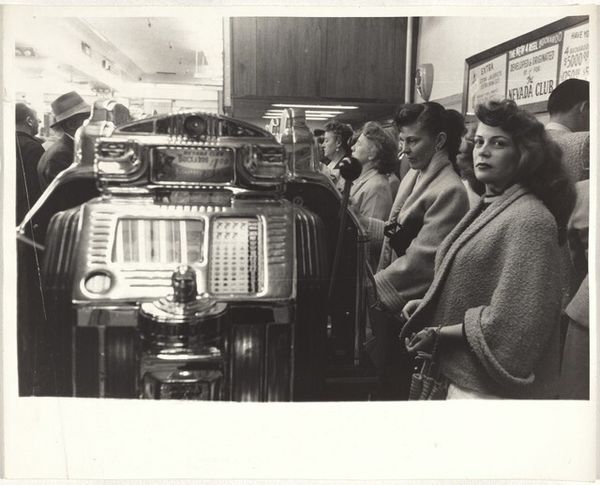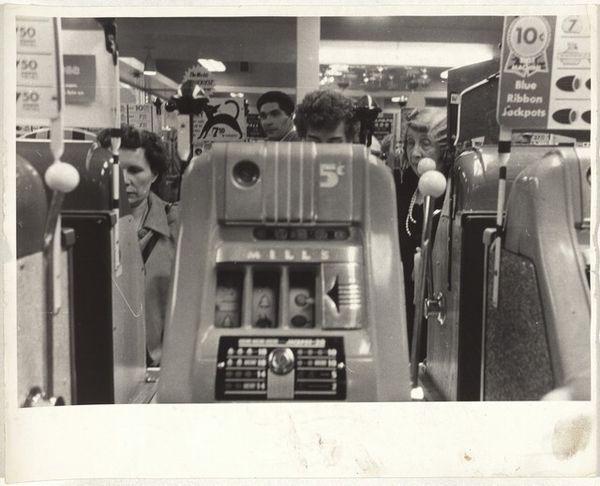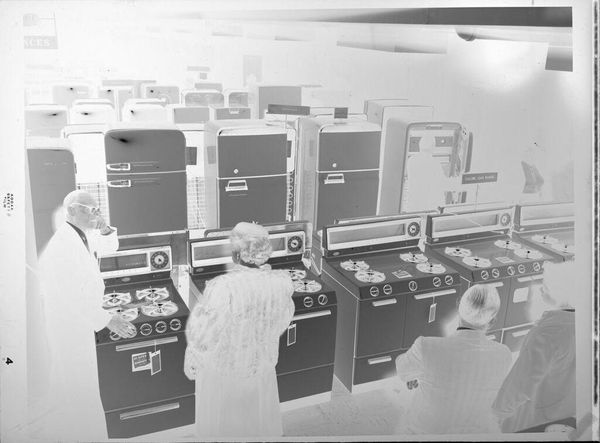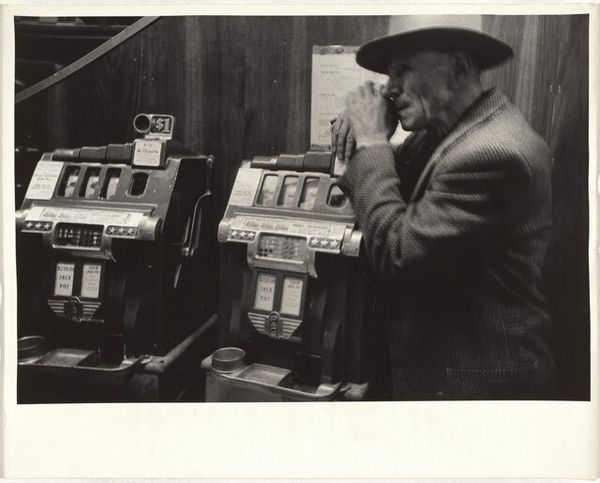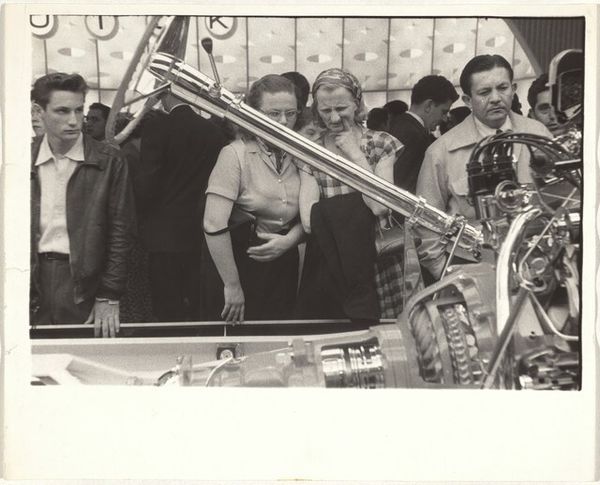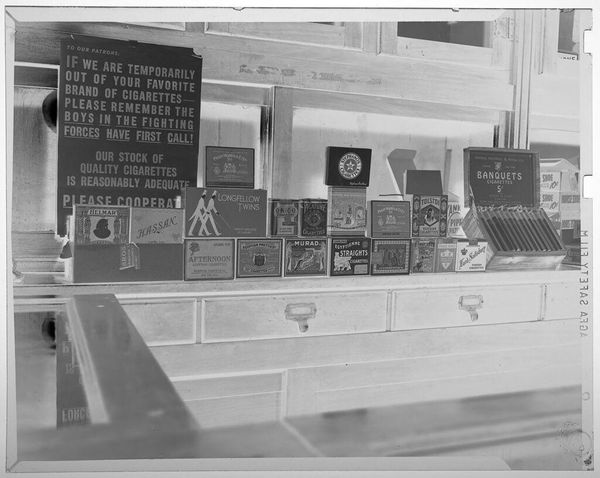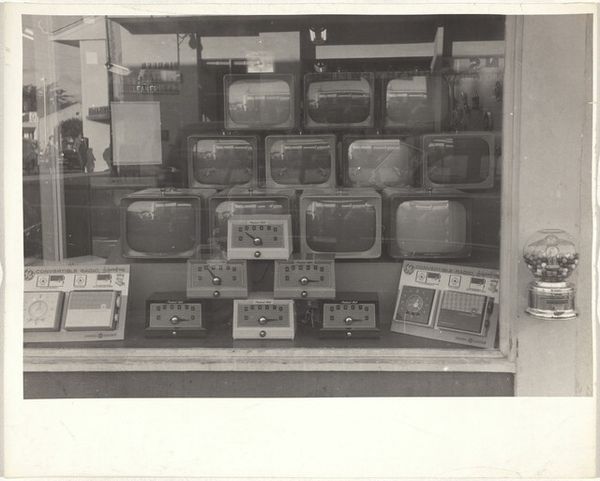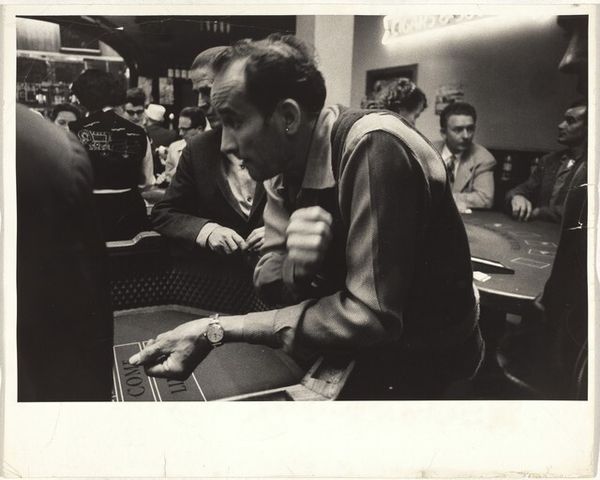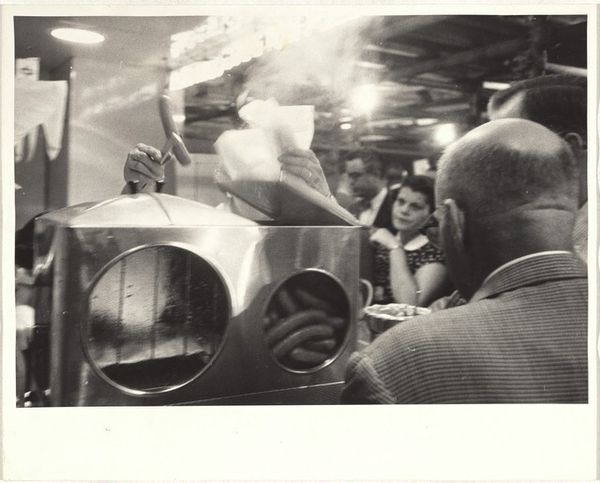
print, photography, gelatin-silver-print
# print
#
social-realism
#
archive photography
#
photography
#
historical photography
#
old-timey
#
gelatin-silver-print
#
ashcan-school
#
cityscape
#
genre-painting
#
realism
Dimensions: sheet: 20.2 x 25.2 cm (7 15/16 x 9 15/16 in.)
Copyright: National Gallery of Art: CC0 1.0
Editor: This is Robert Frank's "Slot Machines - Reno, Nevada" from 1956, a gelatin silver print. There's something incredibly bleak about the rows and rows of people, almost anonymous, feeding these machines. What kind of statement do you think Frank was trying to make here? Curator: This image really encapsulates Frank’s broader critique of American society in the 1950s. Consider that he was Swiss, an outsider looking in. He traveled across the country, documenting everyday life, but with a distinct focus on its darker aspects – alienation, consumerism, and a kind of spiritual emptiness. Does this photo remind you of other works we have studied this semester? Editor: I see the connection to the Ashcan School and their focus on urban realism. But this feels different; it lacks their sense of vibrancy, somehow. Curator: Exactly. Where the Ashcan School saw the energy of the modern city, Frank highlights the monotony and the isolating effects of mass culture. This photo becomes more than just a scene of a casino; it’s a portrait of a society obsessed with quick riches, trapped in repetitive actions. Notice how the composition reinforces this - the receding lines of machines create a sense of endlessness and uniformity. What social tensions could explain this fascination in the American Fifties? Editor: Perhaps it's connected to the rise of consumerism after World War II and the anxieties that came with it. Everyone’s trying to achieve the American Dream, but maybe they're feeling disillusioned? Curator: Precisely. Frank wasn't just interested in documenting reality; he wanted to expose its contradictions and the undercurrent of unease beneath the surface of post-war prosperity. This image questions the very notion of the American Dream. What do we risk for chasing an abstract idea? Editor: I never really considered that a photograph can be so culturally critical, almost like a social commentary. Curator: Frank proved the potent agency of photographs for revealing social norms, capturing the zeitgeist of a population with every snap. It challenged viewers to rethink how photography could unveil societal undercurrents, inspiring critical reflection.
Comments
No comments
Be the first to comment and join the conversation on the ultimate creative platform.
